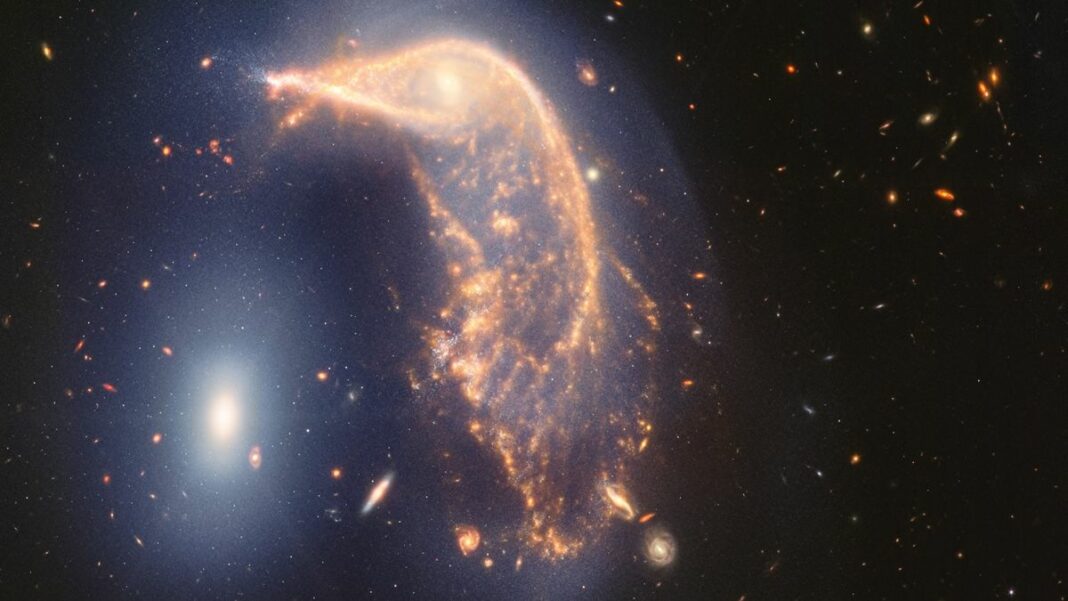Space Photo of the Week: Warped ‚Penguin Galaxy‘ Spotted by JWST
The James Webb Space Telescope (JWST) has captured a stunning image of a galaxy that has been dubbed the ‚penguin galaxy‘ due to its unique shape and appearance. The galaxy, officially known as NGC 2936, is located approximately 326 million light-years away in the constellation Hydra.
The ‚Penguin Galaxy‘ and Its Warped Shape
NGC 2936 gets its nickname from its resemblance to a penguin, with its body and head clearly visible in the image captured by the JWST. The galaxy’s shape is warped due to a gravitational interaction with another galaxy, NGC 2937, which is located nearby.
Waddling Toward Certain Doom
Despite its charming nickname, the ‚penguin galaxy‘ is actually in a state of upheaval. The gravitational forces from the interaction with NGC 2937 have distorted its shape and disrupted its structure. Over time, the two galaxies are expected to merge, leading to a cosmic collision that will result in the formation of a new, larger galaxy.
JWST’s Role in Capturing the Image
The JWST played a crucial role in capturing the image of the ‚penguin galaxy‘ due to its advanced infrared capabilities. Unlike previous telescopes, the JWST is able to peer through the dust and gas clouds that often obscure the view of distant galaxies, providing a clearer and more detailed image of NGC 2936.
Conclusion
The discovery of the ‚penguin galaxy‘ by the JWST highlights the importance of advanced telescopes in expanding our understanding of the universe. By capturing images of distant galaxies like NGC 2936, scientists can learn more about the processes that shape the evolution of galaxies and the universe as a whole.
FAQs
Q: How far away is the ‚penguin galaxy‘ NGC 2936?
A: The ‚penguin galaxy‘ NGC 2936 is located approximately 326 million light-years away in the constellation Hydra.
Q: What is causing the warped shape of NGC 2936?
A: The warped shape of NGC 2936 is the result of a gravitational interaction with the nearby galaxy NGC 2937.
Q: What will happen to the ‚penguin galaxy‘ in the future?
A: Over time, the ‚penguin galaxy‘ NGC 2936 and the nearby galaxy NGC 2937 are expected to merge, leading to the formation of a new, larger galaxy.




